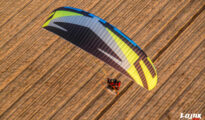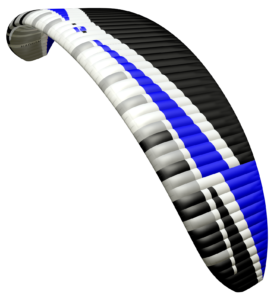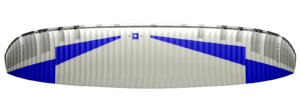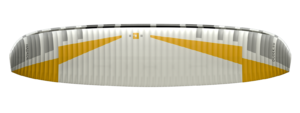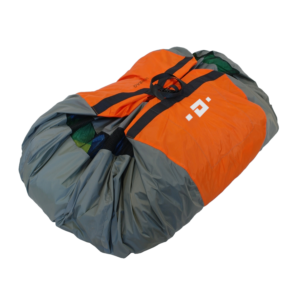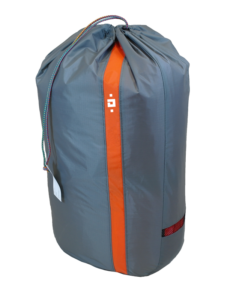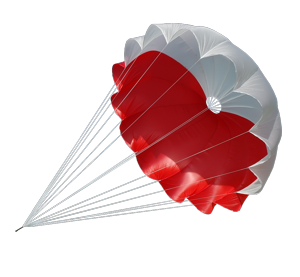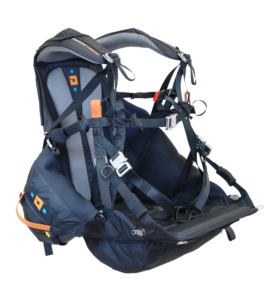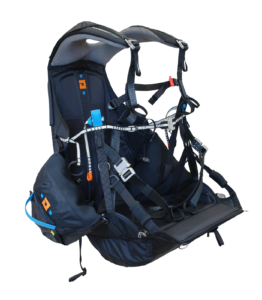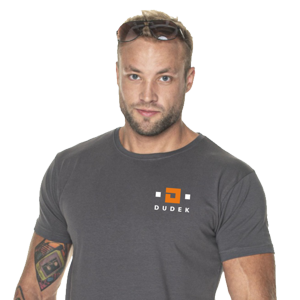Hadron 3
Hadron 3
Hadron 3 is a paraglider combining the best of Hadron XX and Hadron 1.1 for the efficient cross-country flying.
Precise steering, stable flight, great performance.
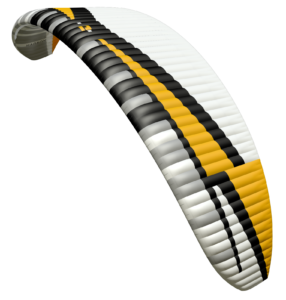
Design and purpose
This wing is dedicated for the active and much flying pilots, who know the character of reflex paragliders and can manage them well. The recommended minimum is 200 hours paramotor time and at least 80 hours of annual flight time.
Hadron 3 has been designed as a solid vehicle for fast covering the ground. It features wide speed range, precise steering and great performance.
It launches flawlessly and easy, smoothly rising up. Does not stay behind, even with trimmers set at slow and nil wind.
Reflex airfoil of Hadron 3 stays almost constant, and the speed system can be safely used at all trimmer settings. When cutting through lift or turbulence the canopy stays over your head with only slight nicking, so it doesn’t require your constant attention.
 See movie
See movie
Design
Hadron 3 has its roots in the Hadron XX, but blends its agility with ease of operation of the Hadron 1.1. Many design solutions are new, from the very efficient airfoil, through risers, to the brake handles.
- Shark-nose (SN) on the leading edge takes care of better aerodynamics of this part of the canopy, as well as higher inner pressure at wide range of the attack angles (meaning airspeed).
- The leading edge is stiffened with synthetic rods of the FET (Flexi Edge Technology), distinctly improving launch quality and guarding against collapses at high speeds.
- Additionally, there is another technology present: the LE2R (Leading Edge Double Reinforcements) between the cells. This brings much cleaner airfoil on the leading edge at high speeds.
- The design features also other effective methods of canopy loads distribution, mediated by most modern sewing technologies.
- Hadron 3 features maximally simplified riser design, does not have the Power Attack (PA), nor other complicated adjustment tools.
- Its rigging has three rows of lines (3L), while the steering system is our well known, original solution of 2D steering, this time with new TCT+ handle (Triple Comfort Toggle), combining features of both the TCT and TST (Tip Steering Toggle).
- As per our standard, the risers are equipped with three optional positions for the steering pulleys and magnets to choose from. Thanks to all these features, steering operation is straightforward and intuitive.
- Obviously, in some powerpack/canopy configurations considerable amount of torque can appear. To counter this, there is proven in our Warp an automatic TEA system (Torque Effect Adjuster). It works on its own after placing the line on proper side, depending on the torque direction.The trimmer tapes are designed as replaceable in case of excessive wear.
Hadron 3 is manufactured entirely in Europe, at our Polish plant, so that we have total control over its sophisticated production process (using among else the advanced LT (Laser Technology) cutting.
Design solutions, technologies and other functionalities are listed below in the Technologies section.
Construction solutions
Technologies, concepts
Risers functionality
Used solutions
Parameters
Weight ranges
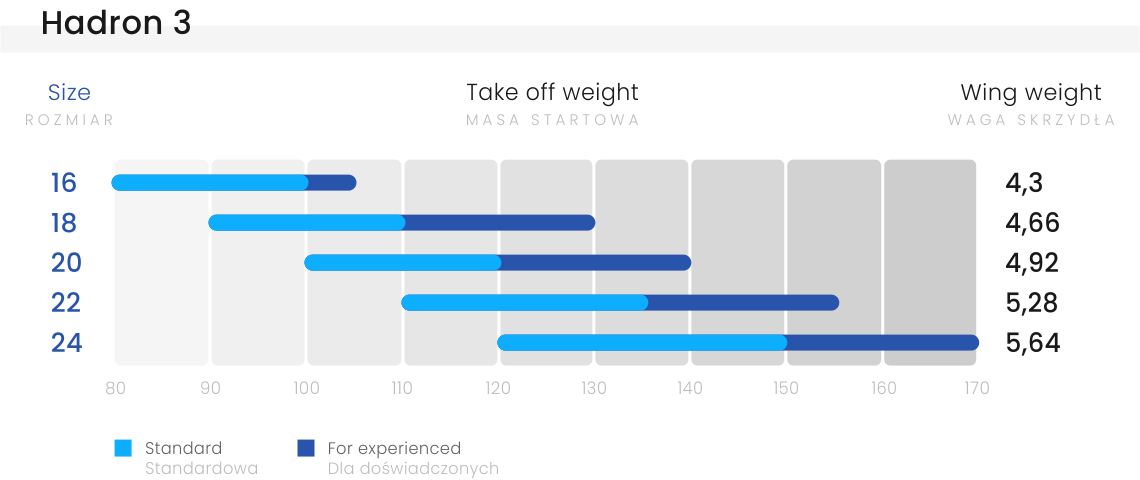
TECHNICAL DATA
| Hadron 3 – size |
16 | 18 | 20 | 22 | 24 |
| Approval – ULM identification | yes | yes | yes | yes | yes |
| Number of cells | 62 | ||||
| Surface area (flat) [m2] | 16.00 | 18.00 | 20.00 | 22.00 | 24.00 |
| Surface area (projected) [m2] | 13.52 | 15.21 | 16.89 | 18.58 | 20.27 |
| Span (flat) [m] | 9.80 | 10.39 | 10.95 | 11.49 | 12.00 |
| Span (projected) [m] | 7.80 | 8.28 | 8.73 | 9.15 | 9.56 |
| Aspect ratio (flat) | 6.00 | ||||
| Aspect ratio (projected) | 4.51 | ||||
| Sink [m/s] | min = 1.2 (+/- 0.2 m/s) | ||||
| Speed* [km/h] | min = 29 ; trim = 45-58 ; max = 71 (+/- 3 km/h)* | ||||
| Distance pilot to wing [m] | 5.78 | 6.13 | 6.46 | 6.78 | 7.08 |
| Total lines lenght [m] | 223.10 | 237.26 | 250.66 | 263.41 | 275.58 |
| Total take-off weight** [kg] | 80-100** | 90-110** | 100-120** | 110-135** | 120-150** |
| Max take-off weight – for experienced*** [kg] | 115*** | 130*** | 140*** | 155*** | 170*** |
| Distance between risers [cm] | 45 | 45 | 45 | 45 | 45 |
| Weight of the wing [kg] | 4.30 | 4.66 | 4.92 | 5.28 | 5.64 |
| Lines | A-8000U: 050; 090; 130; 190 / Technora: 90; 140; 190; 280 / Dyneema: 350 | ||||
| Fabric | Porcher Classic 38 g/m2 / Dominico tex 34 g/m2 / Porcher Hard 40 g/m2 / SR Scrim / SR Laminate 180g/m2 | ||||
* Speeds are given as estimated for the middle wing size and the middle of its weight range. These speeds can vary within +/- 3 km / h depending on the size, take-off weight and additional factors such as air pressure and temperature.
** The basic rule is to choose the size of the wing so that the take-off weight is in the middle of the weight range. Less weight on the wing (lower range take-off weight) can be considered for foot take-off, when flying in calmer conditions, or when we want to improve economy. More experienced pilots who want to fly dynamically, have higher speed and fly in more demanding wind conditions can consider greater wing loading (take-off weight in the upper range). This is a common option among trike users.
*** Note – the canopy significantly changes its behavior with increasing wing loading. The greater the loads, the greater skill and concentration of the pilot are required.









